- Home
- Peter Ackroyd
Venice Page 21
Venice Read online
Page 21
There were other spoils. The crusaders claimed the dominions of Constantinople, and carved up its empire among the victors. Venice negotiated its portion with its customary merchant zeal, and was rewarded “the fourth part and the half of the Roman empire”; that is, it commanded three-eighths of the old empire. It already claimed Dalmatia and Croatia, and now it took possession of the Aegean coasts and islands as well as parts of the Mediterranean. It controlled Crete and Corfu as well as the islands of Modon and Coron. It took the western part of Greece and the islands of the Ionian Sea. It demanded the coast of Thrace, as well as the ports on the Hellespont. It seized Negroponte in the Aegean. While the other crusaders were unsure of their geography, the leaders of Venice knew exactly what they wanted. Many of the islands were then granted to various patrician families of Venice, who held them as fiefdoms of the republic. There was now also a large Venetian colony within Constantinople itself, which acquired a large measure of independence from the home city. There were even reports that the capital of the new empire was about to remove from Venice to Constantinople, but these were discounted. Yet one central fact was clear. The markets of the east were beckoning. All thought of the war against the infidel was forgotten and, indeed, the crusaders never did reach the Holy Land. It was the last of the crusades.
The strategy of Venice was that of a sea power intent upon strengthening its command of the sea. That is why the first great conquests were in the Levant, or eastern Mediterranean, where Venice might pose as the begetter of “an apostolic empire of the East” as a fitting successor to the Christian empire established in the East by Justinian and Constantine. It is a typical example of Venetian rhetoric masking policy. To the victors, the spoils. So the imperium of Venice was largely confined to the islands and to the coastal regions. The Venetians wanted no part of the inland empire of Byzantium, whether in Asia or in Europe. The city could never have become another Rome. Instead it settled for secure trading routes across the seas, with a series of ports under Venetian control linking the market of the lagoon to the markets of the Levant. These were not so much colonies as trading posts, stretching from Venice to the Black Sea. The nature of Venetian dominion was now clear for all to observe. The power of Constantinople was effectively gone for ever. The consequences of the Venetian adventure, however, were by no means beneficent. That which is born in fire may die in fire. A weakened Constantinople became the prey of the Turks; the newly established Latin empire endured for only sixty years; the colonial possessions of Venice also left it exposed to attack in a long sequence of wars that tested its strength. For the next seventy years the serene city would be engaged in almost constant warfare with its rebellious subjects and with its rivals, with the Saracens and with the pirates of the Mediterranean.
17
Cities in Collision
There was one other significant competitor with which Venice had to deal. Genoa was known to the world as “la Superba,” Genoa the proud. Petrarch had described Venice and Genoa as “the two torches of Italy”; but fire can drive out fire. Both cities were known throughout Europe for their rapacity and acquisitiveness. The Genoese were more individualistic and inventive; the Venetians were more communal and conservative. The Genoese had a history of internecine warfare and rebellion; the Venetians were quiescent. Could they ever have lived at peace with one another?
For many centuries the merchants of Genoa competed with those of Venice in the eastern markets. But the success of the Venetians materially hindered the commerce of the rival city. It had been decreed, after the fall of Constantinople, that the Genoese were to be excluded from trade throughout the empire. But the Genoese fought back. They, too, were a seafaring people who had built up a great fleet that could challenge Venice on the seas of the known world. There were open clashes between the rival cities on the coasts of Crete and in Corfu, where the native inhabitants welcomed the arrival of the Genoese. A truce was agreed in 1218, but this was merely a prelude to further and more fatal struggles.
The tension between the two cities remained constant throughout the century, with skirmishing and assaults in all the markets where they competed; in 1258, after some particularly bloody fighting in Syria, the Venetians expelled the Genoese merchants from their quarter in Acre. There was then, for the Venetians, an unfortunate and unexpected development. In 1261 the Greeks, under the leadership of Michael Palaeologus, regained control of Constantinople. The Venetian fleet was at sea and the city was relatively unprotected. Under these auspicious circumstances the emperor’s forces mounted a rapid attack on the Latin contingent, and gained the defensive walls. Three weeks later Michael walked in glory to the basilica of Saint Sophia. He owed much of his success, however, to the Genoese who had supplied him with fifty ships; in return for their support they wished for unrestricted trade access in the markets of the city. They wanted revenge upon the Venetians for their forced departure from Acre. When the Venetians returned, they could do nothing except rescue their compatriots whose shops and dwellings had been destroyed by fire.
The Genoese were not faithful allies. Their merchants were, according to report, arrogant and avaricious. Their fleet proved unequal to a naval challenge from Venice. More importantly their representatives in Constantinople were accused of mounting a conspiracy against Paleologus himself. Ever ready to supplant a rival, Venetian envoys were sent in secret to the court of the emperor. A new trade pact was concluded. The Genoese were to be expelled from the empire, whereas Venice would be granted free privileges. In addition the Venetians were allowed to retain the former Byzantine possessions of Crete, of Negroponte, of Modon and Coron. These were sufficiently generous terms, and the emperor now understood that Venice itself was the greater power.
The Venetians were becoming accustomed to empire. At the beginning of the fourteenth century the doge, Pietro Gradenigo, made a speech to the great council of patricians in which he declared that “it is the duty of every good prince, and of every worthy citizen, to enlarge the State, to increase the Republic, and to seek its welfare by every means in his power.” It was the responsibility of the state, too, to seize every favourable opportunity for aggrandisement. Gradenigo had the mainland of Italy particularly in mind, where now the Venetians were actively promoting a policy of aggressive warfare. They had once sought neutrality in the battles between pope and holy Roman emperor over the cities of Italy. They had once wanted simply to preserve their trade routes. But now the experience of imperial expansion had hardened their sinews. They had become more belligerent. The mainland of Italy was in any case changing its nature. The principal cities no longer saw themselves as vassals of superior powers, such as the papacy, but as sovereign regions or city-states. There were some eighty of them throughout the land of Italy. Some were under the control of individual families, such as the Este of Ferrara, and others were in theory republican communities. Yet the central point was their independence. Independent cities want power and territory. They compete with each other for trade and influence. They even fight each other.
In 1308 Venice fought on the mainland in order to maintain its commercial rights within Ferrara and gain control over the Po. It allied itself with Florence and Bologna in order to fight back the expansive policies of Verona, and in the process captured much mainland territory. It fought against Padua and by its victory gained the provinces of Treviso and Bassano as well as the city of Padua itself. It won Verona and Vicenza. The Italian cities that came under Venetian domination were not subjugated. Venetian civil and military commanders were dispatched to the cities, but municipal government continued in the familiar fashion. The Venetian ruling class had a genius for administration and government. Its power was neither too lax nor too onerous. There are some indications of an imperial style but in the colonies overseas the rulers were blended within the native landscape. There was no ruling ideology of conquest. There was no attempt to impose new standards of value or new principles of belief. They came not as conquerors or as missionaries but, essentially
, as traders. Their true belief was in the efficacy of commerce. They were a very practical people. They were unpopular enough, but they were resented rather than hated.
It would be wrong to assume, however, that there was no internal discontent. The immediate fact of conquest was, for the conquered, hard to bear. The example of Crete is representative. The lands of the local Byzantine magnates were expropriated, and given to Venetians. There were neither finances nor resources to maintain a standing army on the island, so a number of Venetian patricians were sent out as colonisers who retained their lands as fiefdoms on condition that they defended them. These Venetians tended to inhabit the towns and cities of the island. They were accustomed to cities. Cities were their natural habitat. In due course a predominantly agricultural economy was in part turned towards urban trade, trade directed almost exclusively to the mother-city. And of course the Venetian authorities imposed heavy taxation upon every transaction. They encouraged trade for the purpose of exploiting it. Yet merchants began to flourish on the island. There was also a growing market for the wares of Cretan icon-painters. It has been estimated that 95 per cent of the icon-painters, throughout the Venetian empire, originally came from the island.
The Venetian strategy was to remodel the governance of the island on the example of Venice herself. Crete was divided into sestieri. There was a duca in the principal role, modelled on the doge. The major decisions of security and trade, however, were still the prerogative of the Venetian senate. There were more visible changes. The principal square of Candia, the capital of Crete, was renamed Piazza S. Marco. It became the meeting place and market of the island, with its own basilica and ducal palace. It was remodelled and restored to lend dignity and seriousness to the new administration. It became the stage for festivals and public celebrations. A processional way was constructed between the entrance gate of the port and the basilica. Venice was re-creating its theatre of trade and of politics in a new environment. The Byzantine palaces and monuments were reused, their symbolic meaning subtly altered to reflect Venetian hegemony. Some of them were given new, “Venetian,” façades.
Venice saw itself as the natural heir to Byzantium. There was no sudden disruption but, instead, an orderly transition. The religious traditions and the public ceremonies of the old empire were appropriated and adapted. As always Venice lived by assimilation. The example of Crete is again instructive. The ecclesiastical rites of the Latin Church, in ceremonies and processions, were moulded with the rites of the Greek Church. The Venetians adopted the cult of the local saint of the island, Titus. So there were no religious wars. The Venetians were not like the Spanish. There were endless reconciliations and compromises, simply in order to maintain the momentum of what was essentially a vast trading regime. Cretans married Venetians. Venetian merchants migrated to Crete. Cretan scholars and painters migrated to Venice. A new culture emerged, of the West and of the East. After the fall of Byzantium Crete became the centre of Hellenism in the West. There were, naturally enough, influences of opposite tendency. There are still Venetian dialect words embedded in modern Greek, among them the words for steel, armada, velvet, the acacia tree and the wedding ring. Indeed there was a revival of Greek letters under Venetian rule. It was Venice, rather than Byzantium, that preserved native Greek culture in the early modern period. Its poetry was composed by men whose political, racial, spiritual and cultural allegiances were to Venice.
There were revolts and rebellions, as a result of local grievances and factions, but the island remained in Venetian hands for more than four centuries. It can be concluded, therefore, that the Venetians were effectively the first modern colonial power.
Yet in a world dominated by war and empire, there could be no end to rivalry and struggle. In the letters and chronicles of the late fourteenth century the optimism of the Venetians is in some part replaced by intimations of gloom and melancholy; the world seems more uncertain, and the role of providence ill-defined. The loss of confidence is accompanied by the search for greater security in the world. The acquisition of empire, then, brought its own burdens. In 1364 the native inhabitants of Candia rebelled against their Venetian overseers; several Venetian patricians also joined in the revolt. The insurrection was put down, its leaders executed, but it had been a troubling moment for Venice. Petrarch was in the city when the victorious force returned to the lagoon. “We augured good news,” he wrote, “for the masts were garlanded with flowers, and on the deck were lads, crowned with green wreaths and waving flags over their heads …” Relief, as well as triumph, was the emotion of the day. A high mass was celebrated in the basilica, and a great festival was organised in the square itself. Petrarch was present on this occasion, too, and remarked upon the magnificence of the ceremonies. As the empire of Venice became more assured, so the taste for spectacle and ceremonial grew more intense.
Genoa was not quelled by its expulsion from Constantinople. Its traders were dominant in the Black Sea. It held the pre-eminent position in Syria and Palestine. There was never any chance of an enduring peace. In 1350 a Venetian admiral surprised a fleet of fourteen Genoese vessels at the port of Negroponte, and captured ten of them. The other four were allowed to flee simply because the Venetians were too occupied in plundering the cargo of the others. The Venetians and their Greek allies then confronted the Genoese fleet in the Bosphorus, but the battle proved inconclusive. In 1353 the Venetians defeated the Genoese off Sardinia, but a second Genoese fleet began a journey of destruction through the Adriatic and the Aegean. A year later a Venetian fleet was sabotaged and sunk by the Genoese in the port of Modon; the Venetian commanders and their men were taken into custody. It was a signal victory for the Genoese but, even in defeat, the Venetians proved to be expert negotiators. A truce was agreed by means of which each side promised not to attack the other.
The subsequent peace was not, for Venice, a peace at all. It was obliged to cede Dalmatia to the king of Hungary, because of that sovereign’s superior force of arms; it was impelled to withdraw its merchants from Famagusta in Cyprus when the Genoese took over that town. The Venetian fleet kept the Adriatic as its territory, but it was engaged in constant confrontation with the Genoese in the Black Sea. When Venice seized the vital island of Tenedos, controlling access to that sea, the Genoese once again declared war. The Fourth Genoese War was to prove the most terrible, and the most fatal, of all.
The hostilities began in 1378 when a Venetian admiral, Vettor Pisani, sailed west and won a great victory over the Genoese in Genoa’s own waters. But there were complications closer to home. The king of Hungary invited the Genoese to use the Dalmatian coast, opposite Venice, as their centre of operations. It was an opportunity not to be missed. Pisani was obliged to return to the Adriatic, in order to protect Venetian convoys in a gulf that the Venetians had always claimed as their own. His base was at Pola, in Istria, and at the turn of the year the vessels of the fleet were being fitted up and cleaned for future hostilities. But a battle was forced upon them before they could muster all of their ships. The Venetians first had the advantage, when the Genoese admiral was killed, but a reserve force of Genoese ships came forward unexpectedly and overwhelmed the Venetians. Hundreds were killed or captured.
With their fleet effectively out of action, it was the moment that the Venetians most feared. Their enemies closed in upon them from every side. The king of Hungary closed the routes of the northern Adriatic; the lord of Padua blocked the western trade routes on the mainland. The fleets of the Genoese were protected, and were being augmented all the time. They were even able to enter the lagoon, and burn towns along the Lido. This had never before happened in the history of the serene republic. When the Paduans and Genoese joined forces, and took the extensive port of Chioggia to the south of Venice, the armed circle around the city was complete. The Venetians were now effectively under siege. They might even be invaded. Business on the Rialto came to a halt. The salaries of public officials were suspended. The poor were told by the doge that they would find
food in the homes of the rich. When threatened, the Venetians came together as a coherent body. The Venetians proposed negotiations but the Genoese replied that they would not talk to their enemies until the horses of Saint Mark’s had been bridled; by this time the bronze horses, taken from the spoliation of Constantinople, had become a symbol of Venetian pride and greed.
It was a moment of the utmost peril for the Venetian authorities, who knew that they would need the support and co-operation of all the people to avert a fatal outcome. At the insistence of the crowds they released from prison Vettor Pisani, who had been incarcerated for his defeat at Pola. He now became the popular champion and the principal defender of the city. The doge himself, Andrea Contarini, helped to train crews for the new galleys that were being built.
The plan, outlined by Pisani, was to sink barges and boats laden with stone in the deep channels around Chioggia; this was a way of cutting off the port, and its Genoese invaders, from the mainland and from the Genoese fleet still at sea. The scheme was a success. The Genoese found themselves blockaded, with dwindling supplies of food, water and gunpowder. The Venetians were also suffering from privation, but they had one advantage. They possessed hope. Even as Pisani harried and outmanoeuvred the Genoese, trying desperately to leave Chioggia, another Venetian admiral returned to port. Carlo Zeno had completed a military expedition that had captured the cargos and booty of many Genoese ships in the Mediterranean. Then he received instructions to return to the lagoon and assist his city in its trial of strength with Genoa.

 The Clerkenwell Tales
The Clerkenwell Tales The Canterbury Tales
The Canterbury Tales J. M. W. Turner
J. M. W. Turner Chatterton
Chatterton The Canterbury Tales – A Retelling
The Canterbury Tales – A Retelling Alfred Hitchcock
Alfred Hitchcock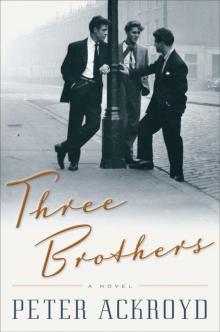 Three Brothers
Three Brothers Wilkie Collins
Wilkie Collins Venice
Venice Poe
Poe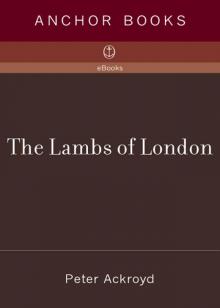 The Lambs of London
The Lambs of London London
London Queer City
Queer City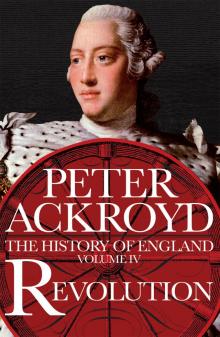 Revolution, a History of England, Volume 4
Revolution, a History of England, Volume 4 Venice: Pure City
Venice: Pure City Foundation
Foundation Thames
Thames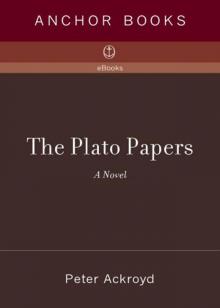 The Plato Papers
The Plato Papers The house of Doctor Dee
The house of Doctor Dee Rebellion: The History of England from James I to the Glorious Revolution
Rebellion: The History of England from James I to the Glorious Revolution Albion: The Origins of the English Imagination
Albion: The Origins of the English Imagination The Fall of Troy
The Fall of Troy The Death of King Arthur
The Death of King Arthur The Trial of Elizabeth Cree
The Trial of Elizabeth Cree London: The Biography
London: The Biography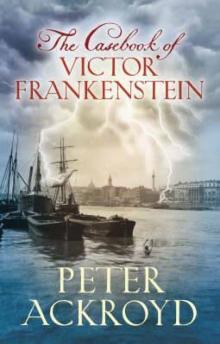 The Casebook of Victor Frankenstein
The Casebook of Victor Frankenstein Hawksmoor
Hawksmoor Charlie Chaplin
Charlie Chaplin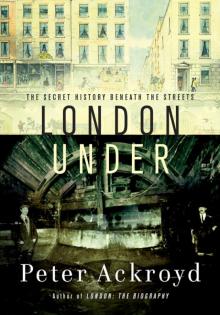 London Under
London Under